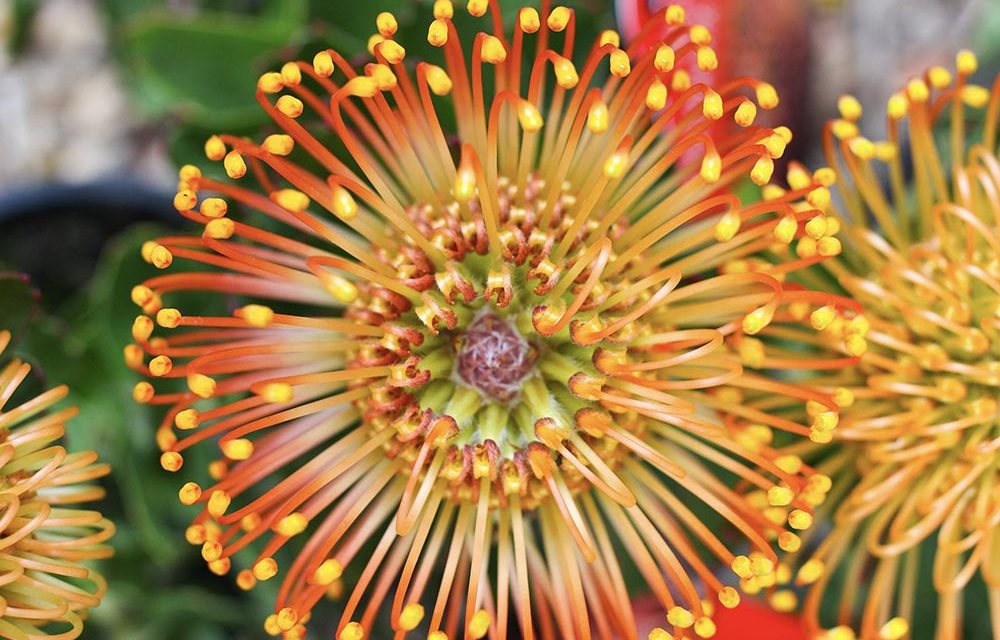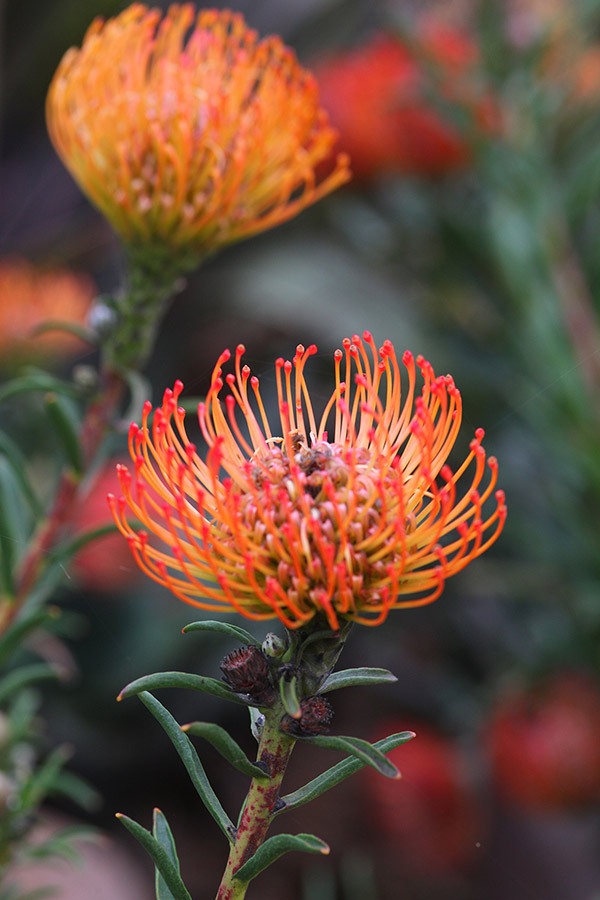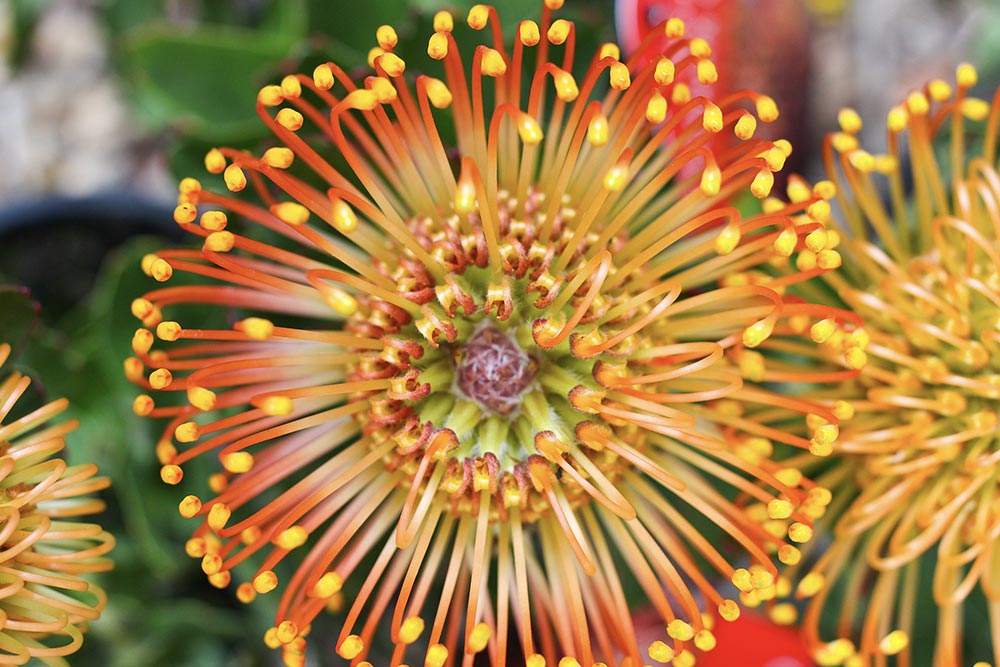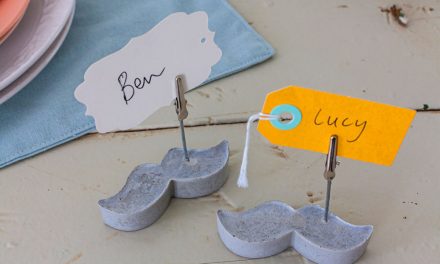Beautiful pincushions may look exotic but they are indigenous to South Africa and you can grow them in your garden.
Pincushions (Leucospermum species) are part of the Cape Fynbos floral kingdom, one of the natural wonders of the world and by following a few tricks, you can have these beautiful plants in your garden too.
This protea, because it is part of the Protea family, has long-lasting flower heads in reds, yellows and oranges. What we think of as flowers are actually flower heads consisting of a large number of very small flowers with stiff protruding styles. It is these styles that give the flowers their characteristic, fascinating appearance – they almost look unnatural. It is because of this captivating form that they make such good cut flowers and are popular in homes across South Africa and, indeed, around the world. In South Africa they flower from July right through to November.
Because they come from the Cape where there is a Mediterranean climate, pincushions naturally prefer hot, dry summers and cold, wet winters, but this doesn’t mean you can’t grow them successfully in the rest of the country – you just need to make a few small tweaks to your garden. The modern cultivars or hybrids are grown all over the world for the cut flower trade.
Despite their delicate appearance, pincushions are drought tolerant – you can tell this from where they can be seen growing naturally, in poor shale soil where there are often dry periods. The trick, though, is that they need to be established before they can cope with these conditions.
As with most Fynbos plants, pincushions prefer poor soil. What does that mean? They don’t like fertiliser, especially those with high levels of phosphate or nitrogen! Don’t give them bonemeal or superphosphate, or any phosphates in any shape or form. If you use it, it will kill your plant.
Young plants can also be fed with an organic fertiliser based on fish emulsion or seaweed, like Kelpak or Atlantic Bio Ocean, but mixed at half the normal strength. So if the bottle says use 10 ml in 1 L of water, use 5 ml in 1 L. This will give them a good start in life and help them to become established more quickly.
- Don’t fill the planting hole with lots of compost – this can create a waterlogged sump that will cause root rot. Instead, mix 50% decomposing bark with 50% river sand to create a well-draining, fairly acidic growing medium and use this in the planting hole or container.
- Full sun – pincushions need full sun and will battle even in light shade.
- In a cold climate it is recommended to plant them in early spring so they can become established before winter.
- Pruning – prune pincushions when they have stopped flowering, which will be in late spring. Also don’t let the plant become too tall or it might topple over.
- When pruning, remove weak or unproductive stems to improve airflow and allow in more light. This will reduce disease and fungal infections and improve growth and flowering.
- Our final pruning tip is to never cut into old wood. Old wood is wood that has very few leaves or is thickened with dark bark.
- Think before you plant – this is going to become a large shrub (5 m high and 2 m wide), so think carefully about where you are going to plant it. (Always read the label of a new plant to see how big it will grow.)
Remember, everything you need for your garden, including leucospermums and other plants, is available from Builders.

















